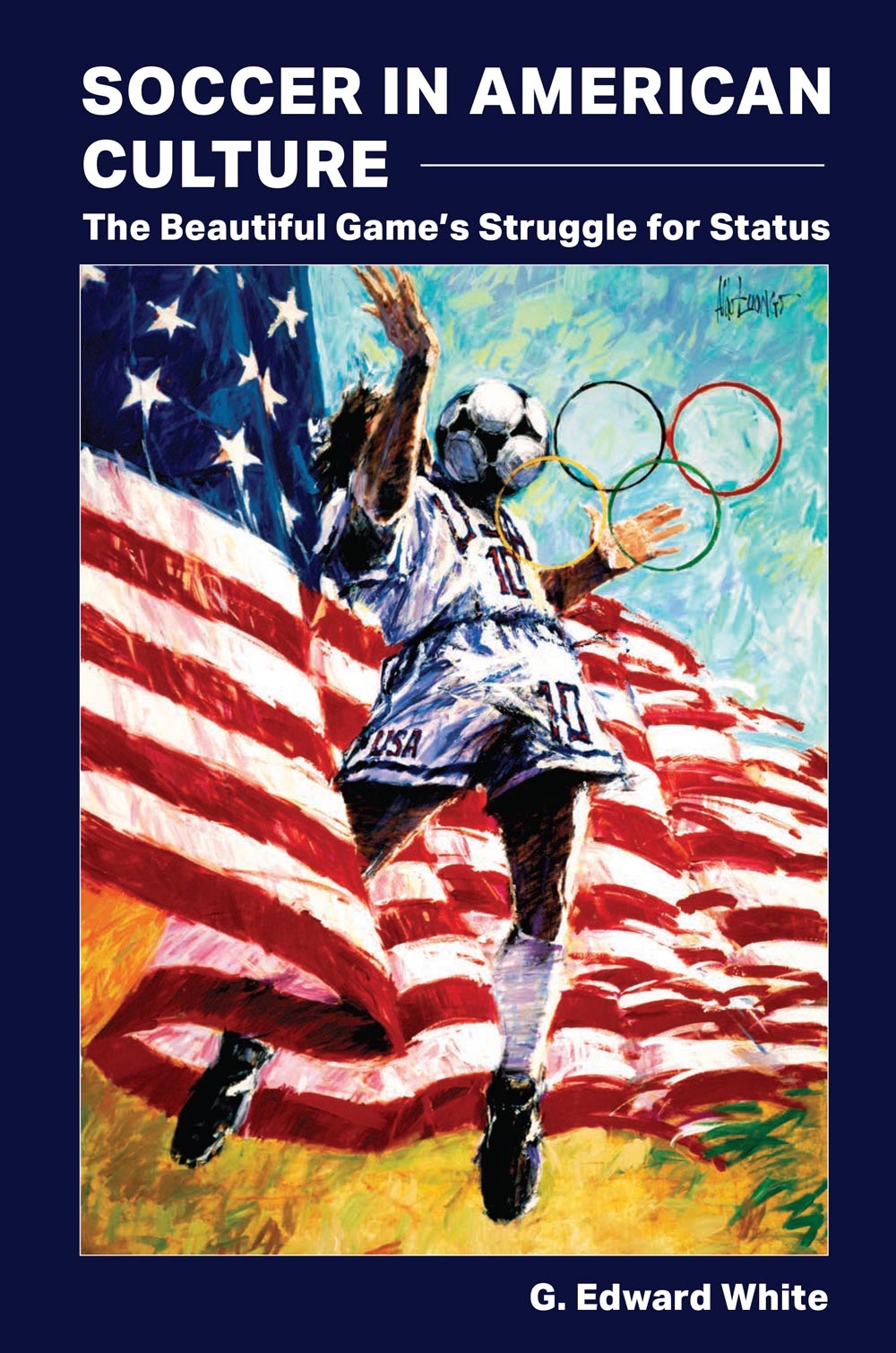Between 2012 and 2019, University of Virginia School of Law professor G. Edward White wrote three books on the relationship of law to American history, starting with the colonial years and ending with the close of the 20th century.
The books, in White’s words, were “long, dense and largely intended for scholarly audiences.”
“I enjoyed writing them,” White said, “but felt I needed a change of pace, and something of a ‘break’ from that sort of scholarship.”
Enter soccer.
An avid player in his younger days at Phillips Academy Andover and Amherst College, White – who published 18 books prior to the new one, including one that was a finalist for the Pulitzer Prize in history – concluded that little had been written about the history of soccer in America.
During a previous respite from legal writing, White had written a book on the early- and mid-20th century history of baseball and thought a comparable book on soccer could be interesting.

Edward White played soccer as a student at Amherst College. (Contributed photo)
Why did soccer fail to take root in the United States, even as it spread from England around much of the rest of the world in the late 19th and 20th centuries?
And why did the sport subsequently have a renaissance since the last decade of the 20th century?
These are the main questions White set out to answer in “Soccer in American Culture: The Beautiful Game’s Struggle for Status” (University of Missouri Press, 2022).
UVA Today caught up with White to learn more.
Q. As someone who played soccer, how frustrating was it that the sport didn’t have the kind of popularity that it did in other parts of the world, and that other sports here in the U.S. like football, baseball, basketball and hockey had?
A. Very few students attended our games, which were often held on Saturday mornings, with a football game scheduled for the afternoon. When we traveled to road games, no fans traveled with us. Nor did the parents of soccer players attend games – it just wasn’t a practice at the time. In all the years I played sports in prep school and college, my parents, who lived in the New York City area while I attended school in New England, never once came to a game.
But at both Andover and Amherst, the teams I played on had good equipment and good practice and game fields. I remember playing away games at Wesleyan and Williams, our two principal college rivals, and having spectators yell comments at me from the sidelines. I do remember some supportive comments from fans at home games. But on the whole, we played in obscurity.
Q. Soccer, though, has had something of a renaissance these last 20 to 30 years here in the U.S. What, in your opinion, have been the factors in that?

In his new book, School of Law professor G. Edward White explores, among many topics, how the women’s game helped grow the men’s game in the United States. (Contributed photo)
A. With respect to men’s soccer, there is a combination of factors. The game is being offered far more frequently in public high schools and colleges, with the result that a much larger base of experienced players and informed spectators has emerged in the American population. This means that the sport can be coached better, played at a higher level and watched with greater appreciation.
In addition, men’s professional soccer has finally understood that a traditional American entrepreneurial approach to sports franchising, in which clubs compete with one another and treat their operations as profit-driven – meaning that they may relocate franchises if clubs fare poorly on the field and at the gate – doesn’t work well when a sport is seeking to establish itself within the American sports market and its franchises have yet to approach profitability.
What is needed is more of an “overseas” approach to the organization of a soccer league, featuring self-imposed limits on salaries, the building of soccer-specific stadiums, and a conception of league franchises as business partners as well as on-the-field competitors.
Q. From a participation standpoint, where does soccer currently rank in relation to other sports being played in the U.S., and what is the breakdown of male and female players?
A. With respect to the women’s game, a crucial factor was the passage of Title IX legislation in the 1970s, which came to be interpreted as requiring public high schools and colleges to create women’s teams in a sport if they were offering men’s teams. Once high schools and colleges recognized that they would need to create equal opportunities for women to participate in sports, soccer emerged as an ideal sport for women, being relatively inexpensive, comparatively safe, and capable of being played by women at a high level. The result has been a dramatic increase in women’s soccer at all levels.
Soccer is now the fourth-most popular sport in the United States in terms of participation [behind football, baseball and basketball]. Although there are still more males playing soccer in high school and college than females, the numbers of female participants have grown in every decade since the 1980s.
Q. You write in your book that the rise of women’s soccer in this country actually helped grow the men’s game. Can you explain how this manifested?
A. The growth of women’s soccer has helped grow the men’s game in the U.S. because the American women’s national team has had notable success internationally, in both the World Cup and Olympic games, since the 1990s, while the men’s national team has struggled. As more Americans have begun to follow the fortunes of the women’s national team, especially during World Cup competitions, the interest in soccer as a spectator sport has grown as well, especially among “casual fans.”
In the same time period, matches in first-division men’s European leagues, such as the British Premier League, Germany’s Bundesliga and Spain’s La Liga, have begun to be televised in the U.S. Those developments, coupled with the rise in the number of Americans familiar with soccer as a sport, have stimulated the growth of the men’s game to the point where [Major League Soccer] now has expanded to 30 clubs and is considering adding two more in the short run.
Q. Do you think soccer will ever have the same type of cultural significance in the U.S. that it has elsewhere?
A. In comparing the cultural significance of soccer in the U.S. and other nations, one needs to emphasize that soccer is by far the most important participatory and spectator sport in most of the rest of the world. Many more people play and follow soccer in most of Europe, Latin America and, increasingly, Asia than any other sport, and that trend is likely to increase with the growth of women’s soccer.
In contrast, there are some sports in the U.S., such as American football, basketball, baseball and even ice hockey, that have been played and followed for many years in a time interval in which soccer was distinctly marginal. So it is a huge challenge for soccer even to reach “mainstream” status in the U.S., let along reach the status it occupies in many other nations. But I think mainstream status for soccer is a distinct possibility in this century.
I reject the theory that there is a limited “cultural space” for sports in any nation. If anything, the digital revolution has expanded the capacity of Americans to play and watch sports. Unless those organizing and administering soccer in high schools, colleges and the professional leagues make serious mistakes – something that is always possible (consider the current owners of baseball franchises) – I think soccer will join the existing “major sports” at some point.
Media Contact
Article Information
March 22, 2022
/content/soccer-has-been-historically-less-popular-us-professor-knows-why

